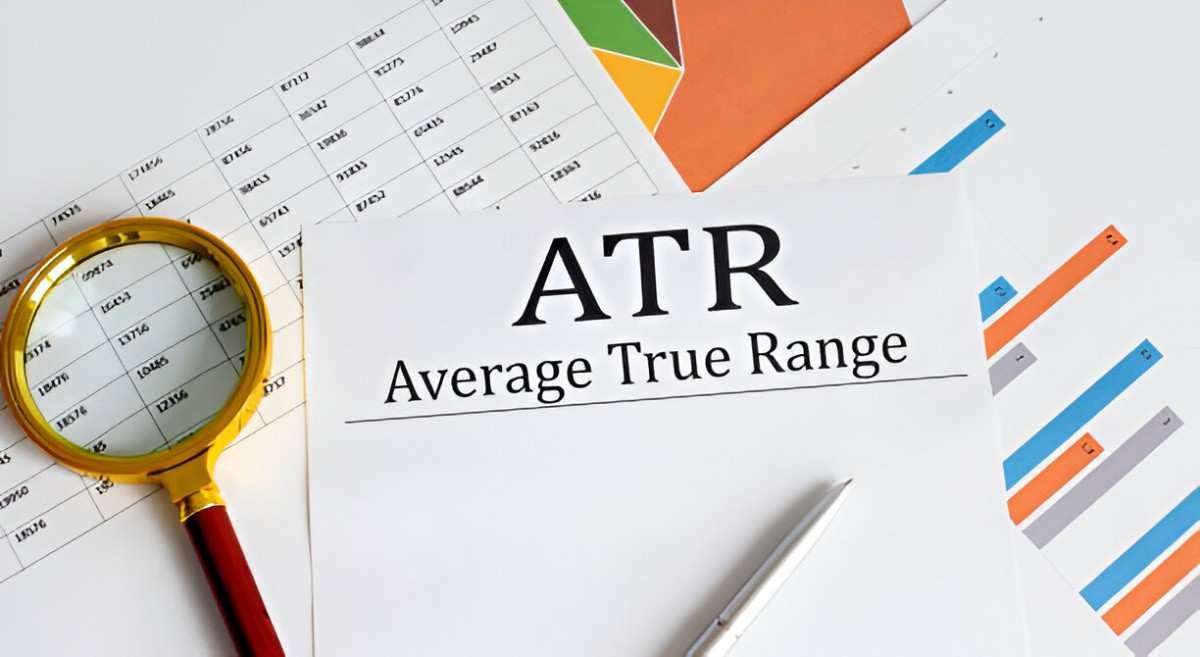As someone who’s been in the stock trading world for a while, I’ve come to realize that there’s one key factor that significantly impacts my ability to make smart trading decisions: volatility. Volatility tells me how much a stock’s price fluctuates over time. Too much fluctuation might signal risk, while too little could point to stagnation. One of the best tools I’ve found to measure this volatility is the Average True Range, or ATR. In this article, I’m going to dive deep into what ATR is, how it works, and how you can use it to your advantage in stock trading.
Table of Contents
What Is ATR?
The Average True Range, or ATR, is a technical analysis indicator that measures market volatility by examining the range of price movements over a set period. Unlike simple price indicators like moving averages, ATR focuses solely on volatility. It was developed by J. Welles Wilder, a well-known figure in technical analysis, in his 1978 book New Concepts in Technical Trading Systems.
ATR calculates the average of the true ranges over a period of time. But what exactly is “True Range”? True Range considers the following three factors:
- The distance between the current high and the current low.
- The distance between the previous close and the current high.
- The distance between the previous close and the current low.
The True Range is the greatest of these three values. By averaging the True Range over a certain number of periods (often 14), ATR gives me a sense of how much a stock moves, on average, during that period.
How to Calculate ATR
Let’s break down how ATR is calculated with an example. Suppose we are looking at a stock and examining its price movements for the last five days. Here’s how the True Range is calculated for each day:
Day 1:
- High: 110
- Low: 105
- Previous Close: 108
True Range = Max(110 – 105, |108 – 110|, |108 – 105|) = Max(5, 2, 3) = 5
Day 2:
- High: 112
- Low: 106
- Previous Close: 110
True Range = Max(112 – 106, |110 – 112|, |110 – 106|) = Max(6, 2, 4) = 6
Day 3:
- High: 114
- Low: 108
- Previous Close: 112
True Range = Max(114 – 108, |112 – 114|, |112 – 108|) = Max(6, 2, 4) = 6
Day 4:
- High: 115
- Low: 110
- Previous Close: 114
True Range = Max(115 – 110, |114 – 115|, |114 – 110|) = Max(5, 1, 4) = 5
Day 5:
- High: 113
- Low: 109
- Previous Close: 115
True Range = Max(113 – 109, |115 – 113|, |115 – 109|) = Max(4, 2, 6) = 6
Now, to calculate the ATR, I average the True Range values for these five days:
\text{ATR} = \frac{5 + 6 + 6 + 5 + 6}{5} = 5.6So, in this example, the ATR is 5.6, meaning the stock has moved, on average, 5.6 points per day over the past five days.
Interpreting ATR
Now that I know how ATR is calculated, let’s move on to understanding its significance. The key takeaway is that a higher ATR indicates greater volatility, while a lower ATR indicates less volatility. This can help me assess the level of risk involved in trading a particular stock.
High ATR
If a stock’s ATR is high, it means the stock is experiencing large price movements. This could indicate a volatile market, and for traders, it means that the risk of sudden price swings is higher. While high volatility can lead to higher potential gains, it also comes with higher risk. I need to be prepared for rapid changes in price, which could result in quick profits or losses.
Low ATR
On the other hand, if the ATR is low, it indicates that the stock’s price movements are more subdued. The market may be in a consolidation phase, and there is less price movement day-to-day. For traders, this could mean fewer opportunities for profit, but it also comes with lower risk. In these cases, I might consider adjusting my trading strategy to account for the lack of volatility.
ATR in Action: Example
Let’s put ATR to use in a real-world scenario. Suppose I’m trading a stock with an ATR of 5.6, and I’m looking to enter a trade with a stop loss 10% below my entry point.
- Let’s say I’m buying the stock at $100 per share.
- A 10% stop loss would place my stop at $90 per share.
Given the ATR of 5.6, I know that the stock can move, on average, 5.6 points per day. If I place my stop at $90, the stock would need to move $10 (10% drop) to hit my stop loss. This is nearly twice the ATR value. So, in this case, the stock is likely to experience enough volatility for my stop to be triggered, even if the stock is moving within its typical range.
Instead, I could widen my stop to 2 times the ATR (around $11.20). This would place my stop at $88.80, which is more in line with the stock’s average daily price movement, reducing the likelihood of being stopped out prematurely.
Using ATR for Position Sizing
ATR can also help me determine the appropriate position size for a trade. The idea here is to use ATR to set my position size in a way that allows for a larger or smaller trade depending on how volatile the stock is.
If a stock has a high ATR, I know that the stock could experience larger price fluctuations. Therefore, I might reduce my position size to manage risk. Conversely, for stocks with a low ATR, I could increase my position size since the stock is less likely to move drastically in the short term.
For example, let’s say I’m trading with a risk tolerance of $500 per trade. If I’m trading a stock with an ATR of 5.6 and I’m placing a stop loss 2 times the ATR (11.2), the calculation for my position size would look like this:
\text{Position Size} = \frac{\text{Risk Amount}}{\text{Stop Loss Distance}} \text{Position Size} = \frac{500 \, \text{USD}}{11.2 \, \text{USD}} = 44.64 \, \text{shares}So, I would buy 44 shares of this stock to ensure my risk remains within my $500 limit.
ATR and Different Time Frames
The ATR can be calculated on any time frame. If I choose a 14-day period, it gives me an average of price movement over 14 days. But what if I want to focus on intraday volatility? I could adjust my time frame to an hourly chart or even a 5-minute chart to get a more granular view of the stock’s volatility within the trading day.
The choice of time frame depends on my trading style. For long-term investors, I might focus on daily or weekly ATR values, while short-term traders like swing traders or day traders might prefer hourly or even minute-based ATR calculations.
Limitations of ATR
While ATR is a useful tool for measuring volatility, it does have some limitations. One of the key limitations is that ATR does not provide a clear direction for the market. It tells me how much a stock moves, but it doesn’t tell me whether the stock is trending up or down. ATR works best when combined with other indicators, such as trend-following indicators (e.g., moving averages) or momentum indicators (e.g., RSI).
Additionally, ATR is based on historical price data, which means it might not always reflect future volatility. It’s essential to use ATR as part of a broader risk management and analysis strategy.
ATR vs. Other Volatility Indicators
I’ve found that ATR is a great tool, but it’s not the only one available for measuring volatility. One alternative is the Bollinger Bands, which measure volatility by calculating the standard deviation of price movements. While ATR measures the range of price movement, Bollinger Bands give me a sense of how far the price is likely to move relative to its average.
Another popular tool is the VIX, also known as the “Fear Index,” which measures implied volatility in the options market. While the VIX can give me an overview of market sentiment, it doesn’t provide the same kind of granular, stock-specific information that ATR does.
Conclusion
In my experience, ATR has proven to be one of the most reliable and straightforward tools for measuring volatility in stock trading. It’s an essential tool for risk management, helping me decide how much to risk, where to set my stop loss, and how to adjust my position size. By keeping an eye on ATR and using it in conjunction with other indicators, I can make more informed trading decisions that align with the volatility of the market and the stocks I’m trading. If you’re serious about trading, I highly recommend incorporating ATR into your toolkit.





